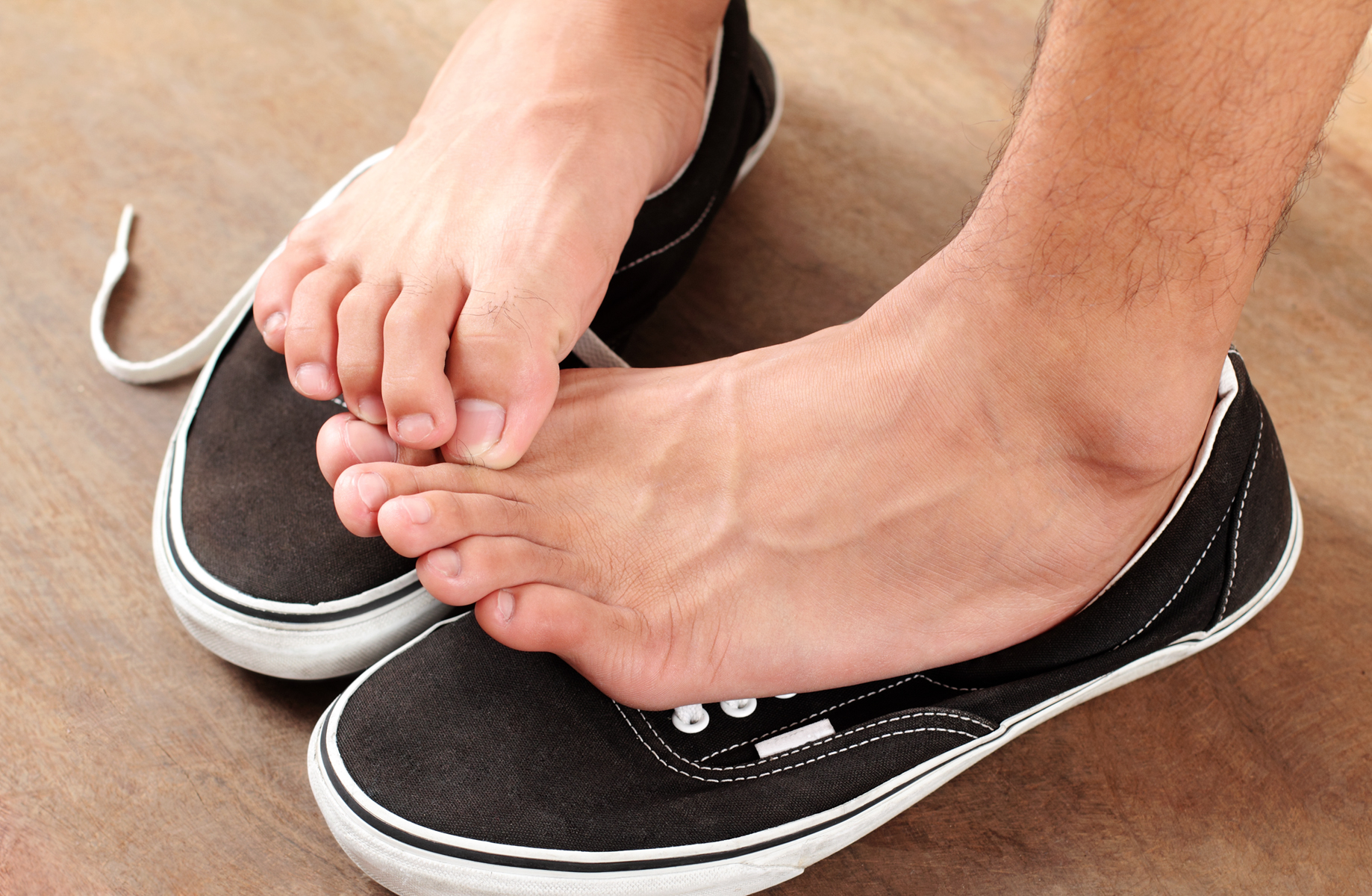Athlete's foot is classified as a fungal infection, occurring when a person, most commonly a man, experiences sweaty or wet feet while inside the confines of a tight fitting shoe.
Athlete’s foot presents itself as a scaly rash that is extremely uncomfortable, causing stinging, itching, and burning sensations throughout the affected area. Because it is a fungal infection, it is very easily transmitted from person to person so therefore, you should not share socks or towels with someone who has been infected with athlete's foot. Wearing protective footwear when visiting public shower areas and pools.
Symptoms
As mentioned before, if you have Athlete’s Foot, you’ll know by a scaly red rash that typically starts from between the toes and then spreads upwards. The itching and burning sensations will also typically be worse right after you remove your socks. However, Athlete’s Foot also can look just like severely dry skin or even eczema, so a trip to the doctor or podiatrist will be the only way to have confirmation.
Causes
Athlete’s foot is caused by having humid conditions surrounding your feet as the fungus grows best in this kind of environment. As stated above, having constantly damp feet and surrounding them with socks and tight shoes that increase the overall temperature of your foot are a breeding ground for the organisms responsible to grow and flourish
Risks
Although it has the name Athlete’s Foot, because of its highly contagious nature, Athlete’s Foot can also spread to:
Hands: This is especially true for those who scratch or pick at the infection. This, in turn, can spread to your nails which can be often difficult to treat.
Groin: Athlete’s Foot comes from the same strain of fungus that causes Jock Itch, so your groin could easily be affected if you use the same towel to dry that area as you did with your infected foot.
Prevention
The following ways can help keep your feet healthy and clear of Athlete’s Foot:
Keep your feet dry, especially if you’re going to be wearing socks and shoes. Towel your feet off completely after a bath or shower, and be sure to get between your toes as well.
If needed, change your socks regularly.
Wear proper fitted and well-ventilated shoes.
Wear protective footwear when stepping into public places such as locker rooms and community pools.
If you suspect that you may have Athlete’s Foot, contact us today for a consultation by calling (416) 654-5515.


Comments